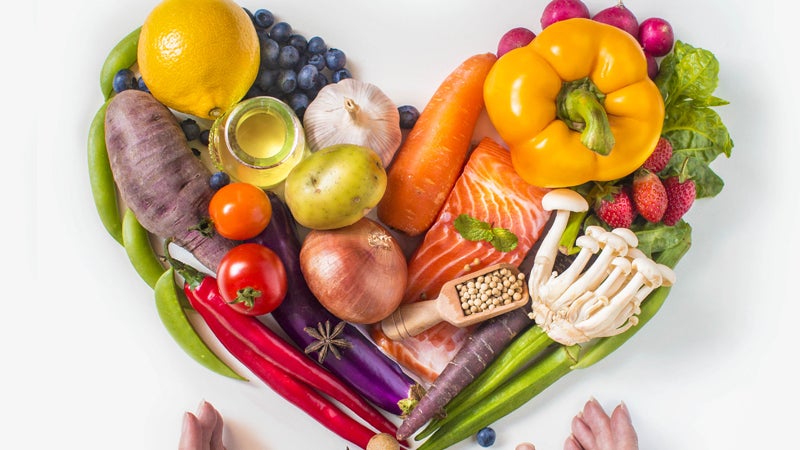Fast facts on fiber & fat
Published 12:00 am Saturday, February 27, 2021
|
Getting your Trinity Audio player ready...
|
You’ve probably heard that it’s good to eat plenty of fiber. But what is fiber, and why is it important for your heart?
Fiber comes from plants. Since your body can’t really digest fiber or absorb it into your bloodstream, it’s not nourished by it. That means, technically speaking, fiber isn’t a “nutrient.” But it’s vital for good health. First, fiber can help reduce your risk of heart disease. Second, it’s also good for the digestive tract and overall health. And, as a bonus, eating lots of fiber helps you feel full on fewer calories, which makes it ideal if you’re trying to lose weight.
There are two main types of fiber—soluble (also called “viscous”) and insoluble. While both have health benefits, only soluble fiber reduces the risk of heart disease. The difference between the types is how they go through the digestive track. Soluble fiber mixes with liquid and binds to fatty substances to help remove them from the body. Soluble fiber thus helps to lower cholesterol levels—thereby reducing the risk of heart disease. Good sources of soluble fiber are whole oats, barley, fruits, vegetables and legumes (which include beans, peas and lentils). Insoluble fiber goes through the digestive tract largely undissolved. Also called “roughage,” insoluble fiber helps the colon function properly. Good sources of insoluble fiber are whole-grain foods (such as wheat and corn bran), fruits (such as apples and pears with the skins), vegetables (such as green beans, cauliflower, and potatoes with the skins) and legumes.
As a rule, fruits have more soluble fiber and vegetables more insoluble fiber. You should try to eat 25–30 grams of total fiber each day. That should include at least 5–10 grams daily of soluble fiber. Here’s a more complete list of good sources of soluble fiber: Whole grain cereals and seeds — barley, oatmeal, oatbran and psyllium seeds (ground); Fruits — apples (with the skin), bananas, blackberries, citrus (such as oranges and grapefruits), nectarines, peaches, pears, plums and prunes; Legumes—black, kidney, lima, navy, northern and pinto beans, yellow, green and orange lentils, and chickpeas and black-eyed peas; Vegetables — broccoli, brussels sprouts and carrots
Fat is a nutrient that helps the body function in various ways. For example, it supplies the body with energy. It also helps other nutrients work and, when it becomes fatty tissue, it protects organs and provides insulation, keeping you warm. But the body only needs small amounts of fat. Too much fat can have bad effects, including turning into unwanted excess pounds and increasing cholesterol in the bloodstream. There are different types of fat, and they have different effects on your risk of heart disease. Knowing which fat does what can help you choose healthier foods.
Here’s the lowdown on fats: Total fat. This is the sum of saturated, monounsaturated and polyunsaturated fats and trans fatty acids in food. Foods have a varying mix of these three types.
Saturated fat is usually solid at room and refrigerator temperatures. It is found in greatest amounts in foods from animals, such as fatty cuts of meat, poultry with the skin, whole-milk dairy products, lard and some vegetable oils, including coconut and palm oils. Saturated fat increases cholesterol in the blood more than anything else in the diet. Keep your intake of saturated fat low. Unsaturated fat is usually liquid at room and refrigerator temperatures. Unsaturated fats occur in vegetable oils, most nuts, olives, avocados and fatty fish, such as salmon. There are types of unsaturated fat—monounsaturated and polyunsaturated. When used instead of saturated fat, monounsaturated and polyunsaturated fats help lower blood cholesterol levels. Monounsaturated fat is found in greatest amounts in foods from plants, including olive, canola, sunflower and peanut oils. Polyunsaturated fat is found in greatest amounts in foods from plants, including safflower, sunflower, corn, soybean and cottonseed oils, and many kinds of nuts. A type of polyunsaturated fat is called omega-3 fatty acids, which are being studied to see if they help guard against heart disease. Good sources of omega-3 fatty acids are some fish, such as salmon, tuna, and mackerel. Use moderate amounts of food high in unsaturated fats, taking care to avoid excess calories.
Foods high in trans fatty acids tend to raise blood cholesterol. These foods include those high in partially hydrogenated vegetable oils, such as many hard margarines and shortenings. Foods with a high amount of these ingredients include some commercially fried foods and some bakery goods.
These tips are courtesy of the National Heart, Lung and Blood Institute’s “Save the Beat: Heart Healthy Recipes,” which can be accessed online at naldc.nal.usda.gov/download/1759251/PDF.





